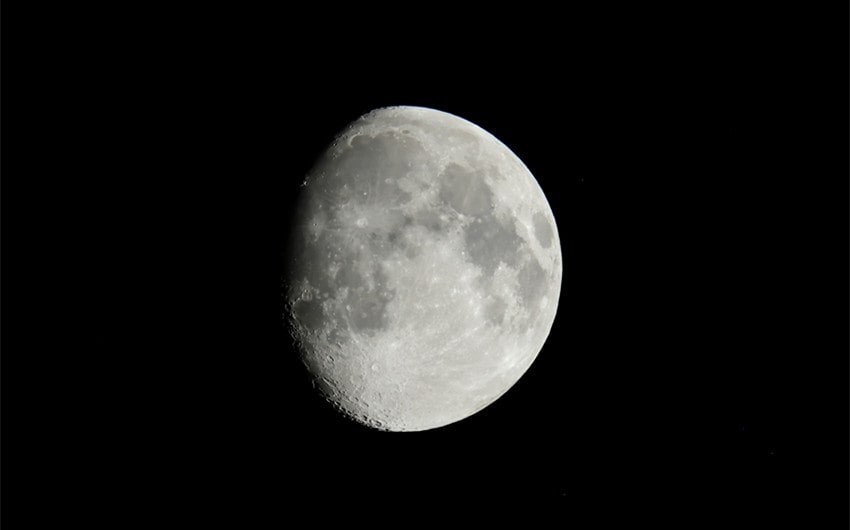Learn 38 Ancient and Modern Other Names for Moon
The moon has always been a source of wonder and inspiration, captivating people across cultures and throughout history. Its beauty and mystery have led to a variety of names and descriptions, each reflecting different traditions, languages, and beliefs.
From ancient myths to modern science, the moon is known by many names, each with its own story to tell. In this article, we’ll explore other names for moon, offering a glimpse into the rich tapestry of words and meanings that different cultures have used to describe our nearest celestial neighbor.
A. Mythological and Cultural Names for the Moon

Image source: Pinterest
The moon has been a central figure in the myths and cultures of civilizations around the world. Different societies have personified the moon in various ways, often attributing it with divine powers and deep symbolic meanings. From goddesses to powerful deities, these mythological and cultural names for the moon reflect the reverence and awe with which humanity has viewed this celestial body throughout history.
1. Selene
- Origin: Greek Mythology
- Explanation: Selene is the ancient Greek goddess of the moon, often depicted as a beautiful woman driving a chariot across the night sky. In Greek mythology, Selene represents the personification of the moon, embodying its power, beauty, and mystery. The name Selene is derived from the Greek word “selas,” meaning “light” or “brightness,” which reflects the luminous nature of the moon.
2. Mani
- Origin: Norse Mythology
- Explanation: In Norse mythology, Mani is the personification of the moon and the brother of Sol, the sun goddess. Mani is said to travel across the sky in a horse-drawn chariot, chased by a wolf, which explains the lunar phases. The name Mani is believed to mean “moon” in Old Norse, symbolizing the moon’s constant pursuit and its cycles.
3. Chandra
- Origin: Hindu Mythology
- Explanation: Chandra is the Hindu god of the moon, revered as a lunar deity in ancient Indian tradition. The name Chandra means “moon” or “shining” in Sanskrit, highlighting the moon’s radiant presence in the night sky. Chandra is also associated with fertility, calmness, and the natural cycles of life, playing a significant role in Hindu astrology and religion.
4. Coyolxauhqui
- Origin: Aztec Mythology
- Explanation: Coyolxauhqui is the Aztec moon goddess, known as the “Golden Bells” due to the bells she wears on her cheeks. She is a central figure in Aztec mythology, representing the moon and its connection to the night and the underworld. Coyolxauhqui’s myth is closely tied to the story of her brother Huitzilopochtli, the god of the sun and war, symbolizing the eternal struggle between night and day.
5. Igaluk
- Origin: Inuit Mythology
- Explanation: In Inuit mythology, Igaluk (also known as Aningaaq) is the moon god and the brother of the sun goddess Malina. The Inuit believe that Igaluk was once a human who ascended to the sky and became the moon. His story is often used to explain the lunar phases and the movement of the moon across the sky. The name Igaluk reflects the moon’s importance in Inuit culture, particularly in guiding hunters and travelers in the Arctic regions.
6. Hecate
- Origin: Greek Mythology
- Explanation: Hecate is a goddess associated with the moon, magic, witchcraft, and the night. Though not exclusively a lunar deity, Hecate is often linked to the dark, mysterious aspects of the moon, particularly the new moon phase. She is depicted as a powerful figure who presides over the realms of the supernatural and the unknown. The name Hecate is believed to have pre-Greek origins, possibly related to the concept of a guiding light in the darkness.
B. Scientific and Astronomical Terms for the Moon
Beyond mythology and culture, the moon has also been studied extensively by scientists and astronomers. This has led to a variety of scientific and astronomical terms used to describe the moon and its characteristics. These terms provide a more technical understanding of the moon, focusing on its physical properties, phases, and role as Earth’s natural satellite.
1. Luna (Astronomy)
- Origin: Latin
- Explanation: “Luna” is the Latin word for the moon, used in scientific contexts to refer specifically to Earth’s natural satellite. The term is widely used in astronomy and space science to distinguish our moon from other moons orbiting different planets. The word “Luna” also gives rise to related terms like “lunar,” which describes anything pertaining to the moon, such as lunar phases, lunar eclipses, and lunar exploration.
2. Satellite
- Origin: Astronomy
- Explanation: In scientific terms, a satellite is any object that orbits a planet or another celestial body. The moon is Earth’s natural satellite, meaning it naturally orbits our planet without human intervention. The term “satellite” is used in both natural and artificial contexts, with artificial satellites being human-made objects sent into orbit for communication, weather monitoring, and research.
3. Orb
- Origin: General Scientific Terminology
- Explanation: “Orb” is a term used to describe a spherical object, particularly in astronomy where it can refer to a planet, star, or satellite like the moon. The moon is often referred to as an “orb” due to its round shape and the way it appears in the sky as a glowing, spherical body. The term emphasizes the moon’s geometric and physical characteristics.
4. Crescent
- Origin: Astronomy
- Explanation: “Crescent” refers to the phase of the moon when less than half of its visible surface is illuminated by the sun, creating a thin, curved shape. This term is derived from the Latin “crescere,” meaning “to grow,” as it typically refers to the waxing crescent phase when the moon’s visibility increases each night. The crescent moon is often associated with new beginnings and has been used as a symbol in various cultures and religions.
5. Gibbous
- Origin: Astronomy
- Explanation: The term “gibbous” describes the phase of the moon when more than half, but not all, of its visible surface is illuminated. The word “gibbous” comes from the Latin “gibbus,” meaning “humpbacked,” which reflects the shape of the moon during this phase. Gibbous phases occur between the first quarter and full moon, as well as between the full moon and last quarter.
6. New Moon
- Origin: Astronomy
- Explanation: The “new moon” phase occurs when the moon is positioned between the Earth and the sun, with its dark side facing Earth. During this phase, the moon is not visible from Earth because its illuminated side is facing away from us. The new moon marks the beginning of the lunar cycle, which lasts about 29.5 days.
7. Full Moon
- Origin: Astronomy
- Explanation: A “full moon” occurs when the Earth is positioned directly between the sun and the moon, with the moon’s entire visible surface illuminated by the sun’s light. This phase is the midpoint of the lunar cycle and is often associated with various cultural, religious, and mythological beliefs. The full moon is known for its bright, round appearance in the night sky.
C. Names for the Moon in Different Languages

Across the globe, the moon is known by many names, each reflecting the linguistic and cultural diversity of our world. These names highlight how different languages and regions have interpreted and named the moon, often linking it to local beliefs, traditions, and natural phenomena. Exploring these names gives us insight into the universal importance of the moon across cultures.
European Languages
1. Lune (French):
-
- Origin: French
- Explanation: “Lune” is the French word for the moon, derived from the Latin “luna.” In French culture, the moon has inspired countless works of art, literature, and folklore, symbolizing romance, mystery, and change.
2. Mond (German):
-
- Origin: German
- Explanation: “Mond” is the German word for the moon, sharing its roots with the English word “month,” as both terms are connected to the lunar cycle. In German folklore, the moon is often associated with supernatural occurrences and is a prominent symbol in poetry and literature.
3. Måne (Swedish):
-
- Origin: Swedish
- Explanation: “Måne” is the Swedish word for the moon, closely related to other Germanic languages. The moon, or “Måne,” has a significant place in Scandinavian mythology, particularly in tales of gods and giants who influence the celestial bodies.
4. Sel (Welsh):
-
- Origin: Welsh
- Explanation: “Sel” is the Welsh word for moon, derived from the ancient Celtic language. The moon has a strong presence in Welsh mythology and poetry, often symbolizing femininity, magic, and the passage of time.
Asian Languages
1. Tsuki (Japanese):
-
- Origin: Japanese
- Explanation: “Tsuki” is the Japanese word for the moon, a central figure in Japanese culture and tradition. The moon is celebrated in festivals such as “Tsukimi,” where people gather to view and honor the beauty of the full moon.
2. Yue (Chinese):
-
- Origin: Chinese
- Explanation: “Yue” is the Chinese word for the moon, playing a crucial role in Chinese culture, particularly in the Lunar New Year and the Mid-Autumn Festival. The moon is seen as a symbol of unity, family, and the cyclical nature of life.
3. Dal (Korean):
-
- Origin: Korean
- Explanation: “Dal” is the Korean word for the moon, which holds a place of reverence in Korean folklore and traditional celebrations. The moon is often associated with harmony, prosperity, and the balance between opposites.
4. Bulan (Indonesian/Malay):
-
- Origin: Indonesian/Malay
- Explanation: “Bulan” is the word for moon in both Indonesian and Malay languages. The moon is an essential part of local folklore, symbolizing change, time, and the natural rhythms of life.
African Languages
1. Mwezi (Swahili):
-
- Origin: Swahili
- Explanation: “Mwezi” is the Swahili word for the moon, deeply embedded in the culture and traditions of East African communities. The moon is often linked to agricultural cycles and traditional ceremonies.
2. Lua (Yoruba):
-
- Origin: Yoruba
- Explanation: “Lua” is the Yoruba word for moon, playing a vital role in the cosmology and religious practices of the Yoruba people. The moon is associated with various deities and is considered a powerful symbol of change and transition.
3. Inyanga (Zulu):
-
- Origin: Zulu
- Explanation: “Inyanga” is the Zulu word for the moon, also meaning “month,” reflecting the close relationship between the lunar cycle and the calendar. The moon is significant in Zulu culture, particularly in the timing of agricultural activities and rituals.
4. Mweziga (Shona):
-
- Origin: Shona
- Explanation: “Mweziga” is the Shona word for the moon, an important celestial body in the traditions and beliefs of the Shona people of Zimbabwe. The moon is often associated with fertility, growth, and the cycles of nature.
5. Duro (Igbo):
-
- Origin: Igbo
- Explanation: “Duro” is the Igbo word for the moon, which is central to the agricultural calendar and religious observances of the Igbo people. The moon is seen as a guide for planting and harvesting, as well as a symbol of continuity and renewal.
Middle Eastern Languages
1. Qamar (Arabic):
-
- Origin: Arabic
- Explanation: “Qamar” is the Arabic word for the moon, an important symbol in Islamic culture and calendar, particularly in determining the timing of religious events such as Ramadan. The moon is also celebrated for its beauty and is often used in Arabic poetry and art.
2. Mah (Persian):
-
- Origin: Persian
- Explanation: “Mah” is the Persian word for the moon, often associated with beauty, love, and the divine in Persian literature and art. The moon is a significant figure in Persian mythology, symbolizing both the temporal and the eternal.
3. Ay (Turkish):
-
- Origin: Turkish
- Explanation: “Ay” is the Turkish word for the moon, a prominent symbol in Turkish culture and history. The moon features in many Turkish myths and legends, often representing guidance, power, and mysticism.
4. Yar (Hebrew):
-
- Origin: Hebrew
- Explanation: “Yar” is the Hebrew word for the moon, connected to the ancient Jewish calendar, which is based on lunar cycles. The moon has religious significance in Judaism, marking the beginning of months and the timing of festivals.
5. Inan (Akkadian):
-
- Origin: Akkadian
- Explanation: “Inan” is the Akkadian word for the moon, from the ancient Mesopotamian language. The moon was worshiped as a deity in Akkadian culture, often associated with the god Sin, who governed the passage of time and was seen as a protector.
D. Poetic and Literary Names for the Moon
The moon has long been a source of inspiration for poets and writers, who have used it to evoke emotions, set scenes, and create vivid imagery. Poetic and literary names for the moon often reflect its beauty, mystery, and symbolic significance in human life. These names capture the moon’s romantic and mystical qualities, making it a powerful symbol in literature and art.
1. The Silver Orb
- Origin: Poetic Description
- Explanation: “The Silver Orb” is a poetic name for the moon, highlighting its bright, silver-like appearance in the night sky. This term is often used in literature to evoke the moon’s ethereal beauty and its role as a gentle light in the darkness.
2. The Night’s Lantern
- Origin: Literary Metaphor
- Explanation: “The Night’s Lantern” is a metaphorical description of the moon, emphasizing its function as a natural light source during the night. This term is often used in poetry and literature to create a vivid image of the moon guiding travelers and illuminating the night.
3. The Celestial Lamp
- Origin: Literary Description
- Explanation: “The Celestial Lamp” is another poetic name for the moon, portraying it as a lamp that hangs in the heavens, providing light from above. This term underscores the moon’s role in brightening the night sky and its perceived position as a divine or otherworldly object.
4. The Pale Queen
- Origin: Poetic and Mythological Reference
- Explanation: “The Pale Queen” refers to the moon as a regal, feminine figure that rules over the night. This name is often found in poetry and myth, where the moon is personified as a queen who presides over the stars and the darkness.
5. The Midnight Pearl
- Origin: Literary Metaphor
- Explanation: “The Midnight Pearl” is a metaphor that likens the moon to a pearl, rare and precious, shining in the black velvet of the night sky. This name is used in literature to convey the moon’s beauty and its serene, calming presence during the night.
6. The Weeping Maiden
- Origin: Poetic Description
- Explanation: “The Weeping Maiden” is a poetic name for the moon, evoking an image of sorrow or longing. This term is often used in literature to depict the moon as a solitary, melancholic figure that watches over the Earth with a soft, sorrowful light.
7. The Nocturnal Beacon
- Origin: Literary Description
- Explanation: “The Nocturnal Beacon” describes the moon as a guiding light for those navigating the night. This term is often used in literature and poetry to emphasize the moon’s role in providing direction and safety in the darkness, acting as a beacon for travelers.






